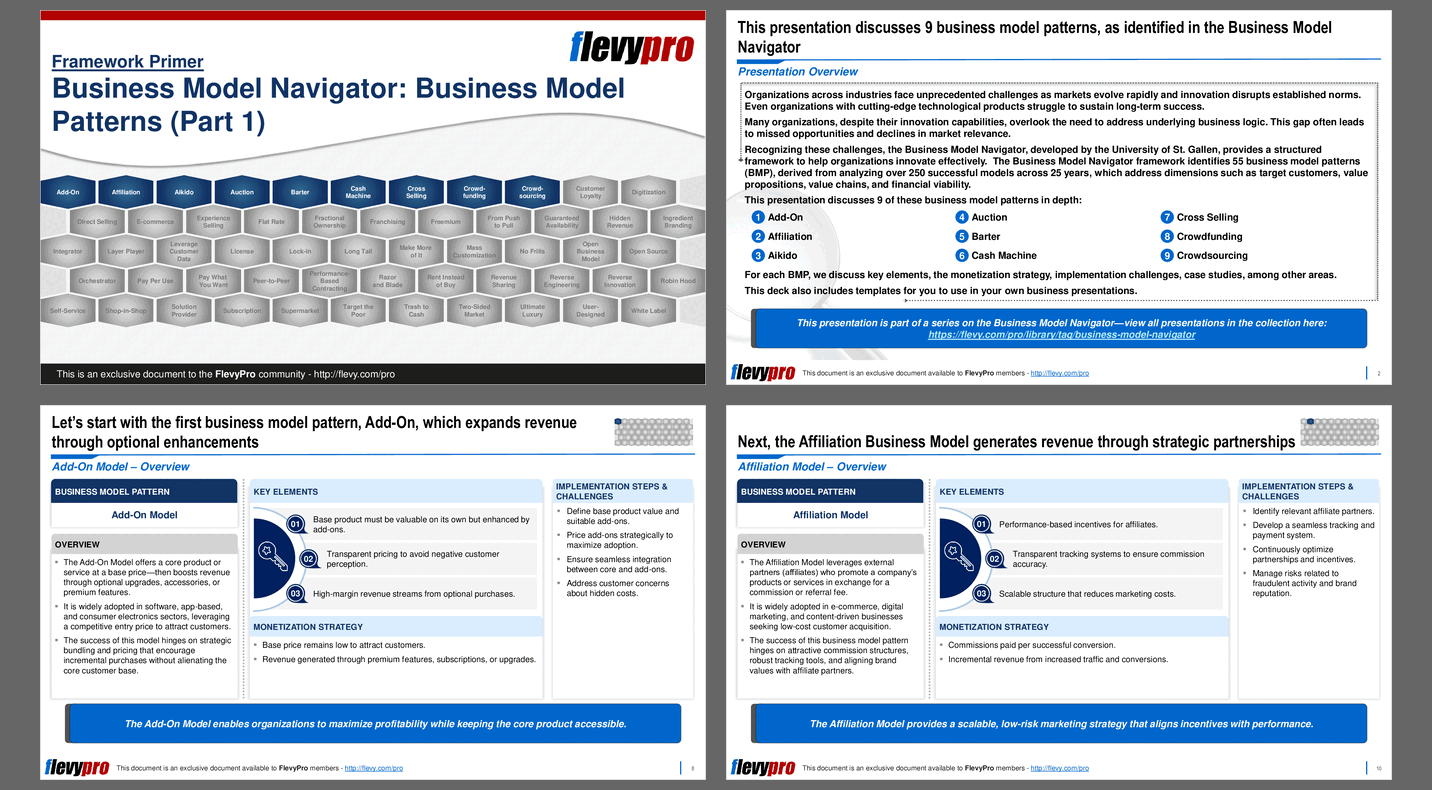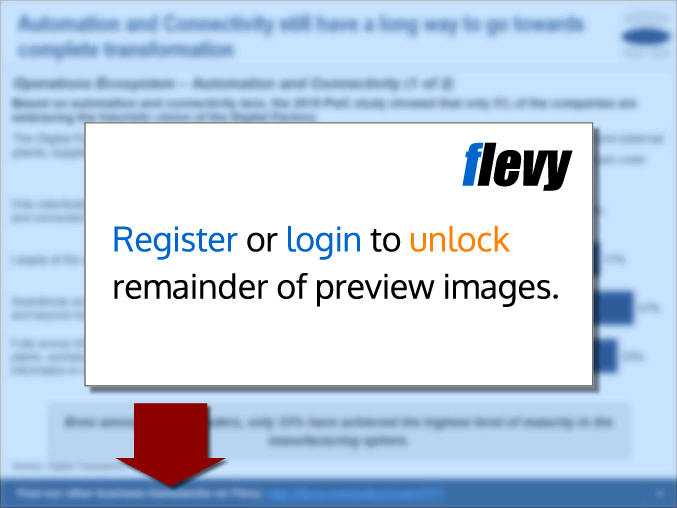Business Model Navigator: Business Model Patterns (Part 1) (PowerPoint PPTX Slide Deck)
PowerPoint (PPTX) 38 Slides FlevyPro Document
BUSINESS MODEL DESIGN PPT DESCRIPTION
Organizations across industries face unprecedented challenges as markets evolve rapidly and innovation disrupts established norms. Even organizations with cutting-edge technological products struggle to sustain long-term success.
Many organizations, despite their innovation capabilities, overlook the need to address underlying business logic. This gap often leads to missed opportunities and declines in market relevance.
Recognizing these challenges, the Business Model Navigator, developed by the University of St. Gallen, provides a structured framework to help organizations innovate effectively. The Business Model Navigator framework identifies 55 business model patterns (BMP), derived from analyzing over 250 successful models across 25 years, which address dimensions such as target customers, value propositions, value chains, and financial viability.
This PPT presentation discusses 9 of these business model patterns in depth:
1. Add-On – The Add-On Model offers a core product or service at a base price—then boosts revenue through optional upgrades, accessories, or premium features.
2. Affiliation – The Affiliation Model leverages external partners (affiliates) who promote a company's products or services in exchange for a commission or referral fee.
3. Aikido – The Aikido Model turns a competitor's strengths or mainstream offerings on their head, positioning a product or service in a contrasting way to gain market advantage.
4. Auction – The Auction Model creates a competitive bidding environment where buyers submit bids, and the highest bidder secures the product or service. The price is determined by the market through competitive bidding
5. Barter – The Barter Model allows businesses and individuals to trade goods or services directly without using money, making it a practical solution in cash-limited economies.
6. Cash Machine – The Cash Machine Model generates immediate cash flow by requiring customers to pay upfront before receiving goods or services.
7. Cross-Selling The Cross-Selling Model increases revenue by offering customers complementary products or services related to their primary purchase.
8. Crowdfunding – The Crowdfunding Model raises capital by collecting small contributions from a large group of individuals, reducing reliance on traditional investors.
9. Crowdsourcing – The Crowdsourcing Model asks for external contributors to generate ideas, content, or solutions, reducing reliance on internal resources.
For each BMP, we discuss key elements, the monetization strategy, implementation challenges, case studies, among other areas.
This deck on business model patterns also includes PPT templates for you to use in your own business presentations.
Got a question about the product? Email us at flevypro@flevy.com.
Source: Best Practices in Business Model, Business Model Navigator PowerPoint Slides: Business Model Navigator: Business Model Patterns (Part 1) PowerPoint (PPTX) Presentation Slide Deck, LearnPPT Consulting
Did you need more documents?
Consider a FlevyPro subscription from $39/month. View plans here.
For $10.00 more, you can download this document plus 2 more FlevyPro documents. That's just $13 each.







